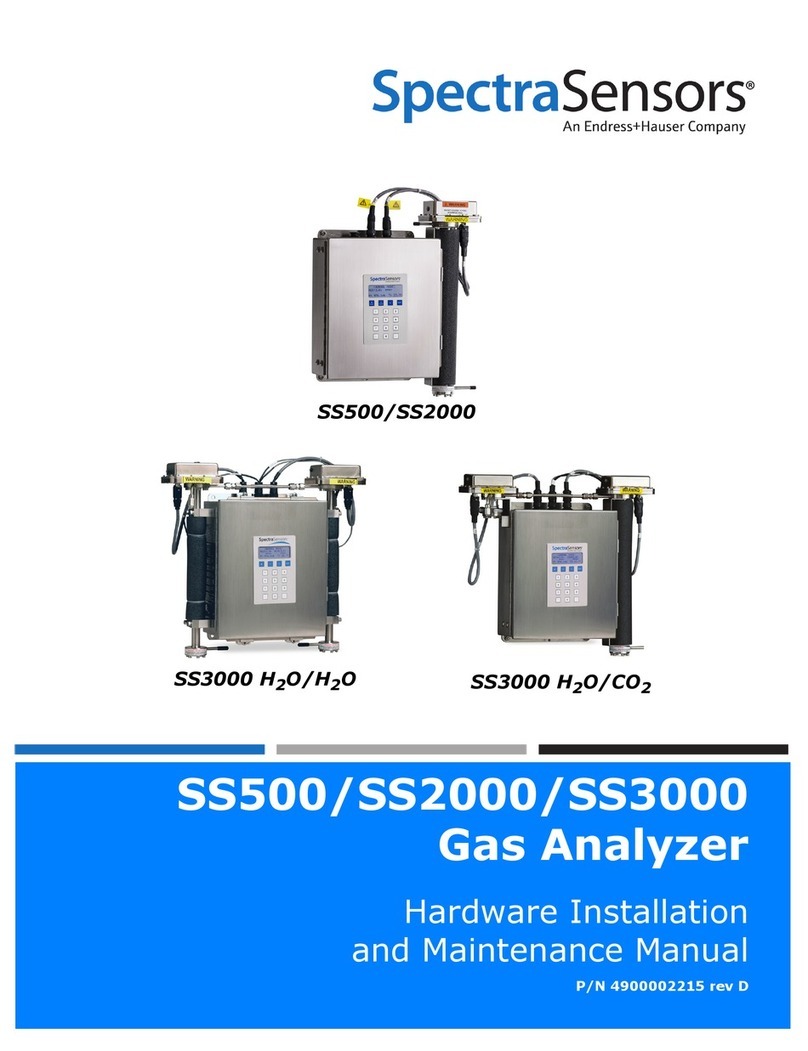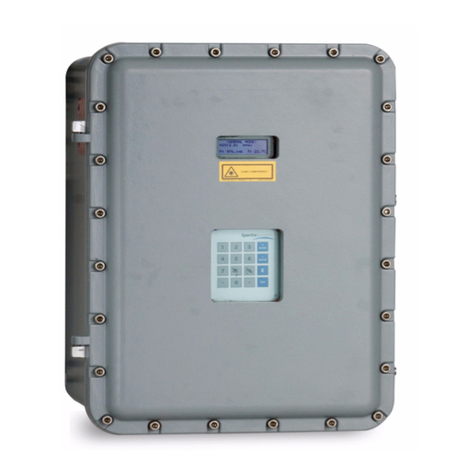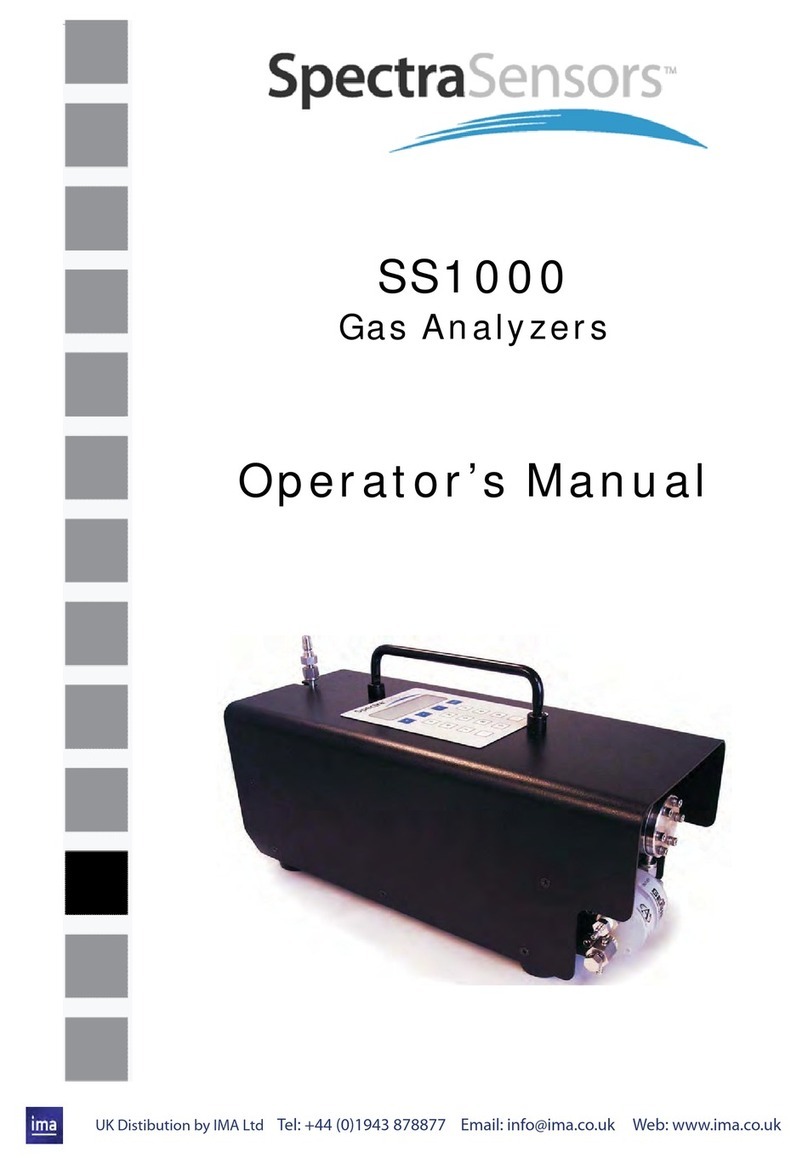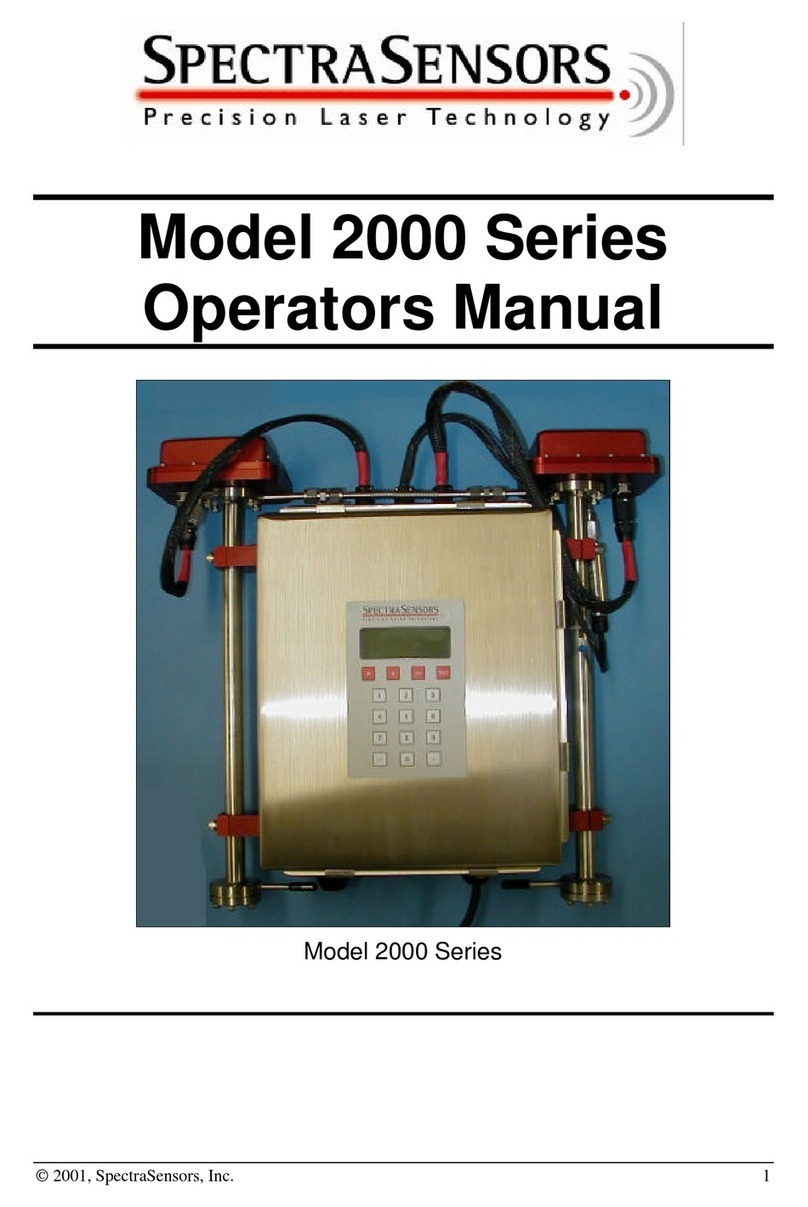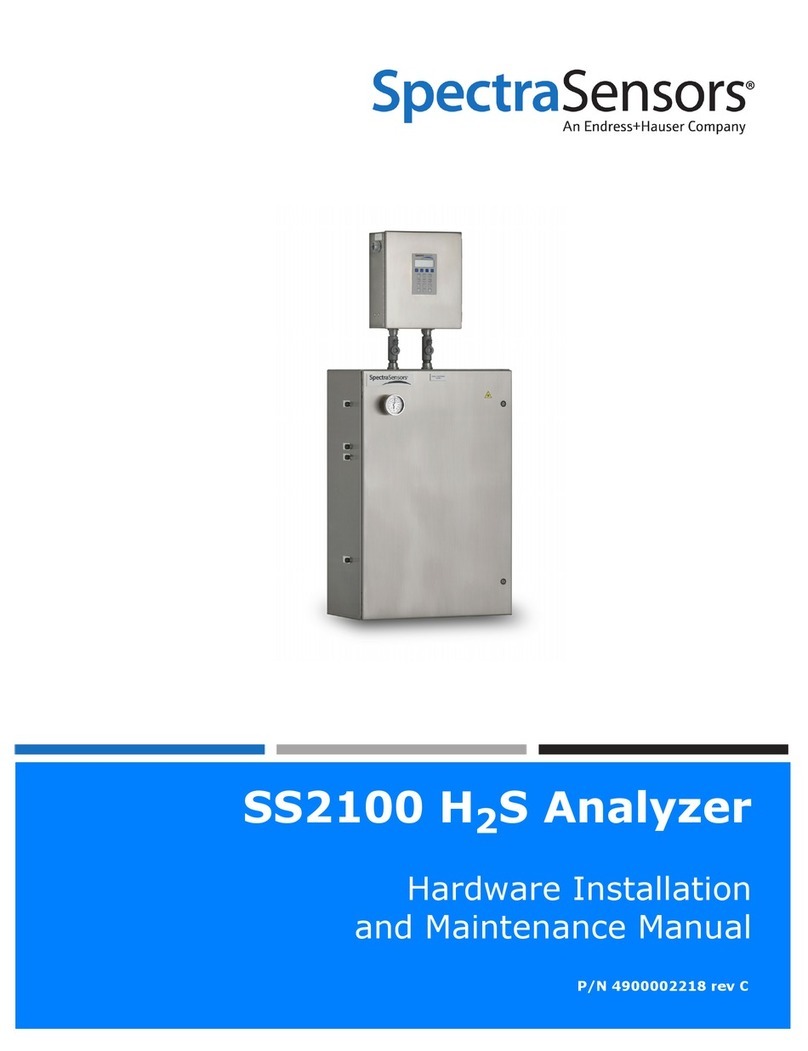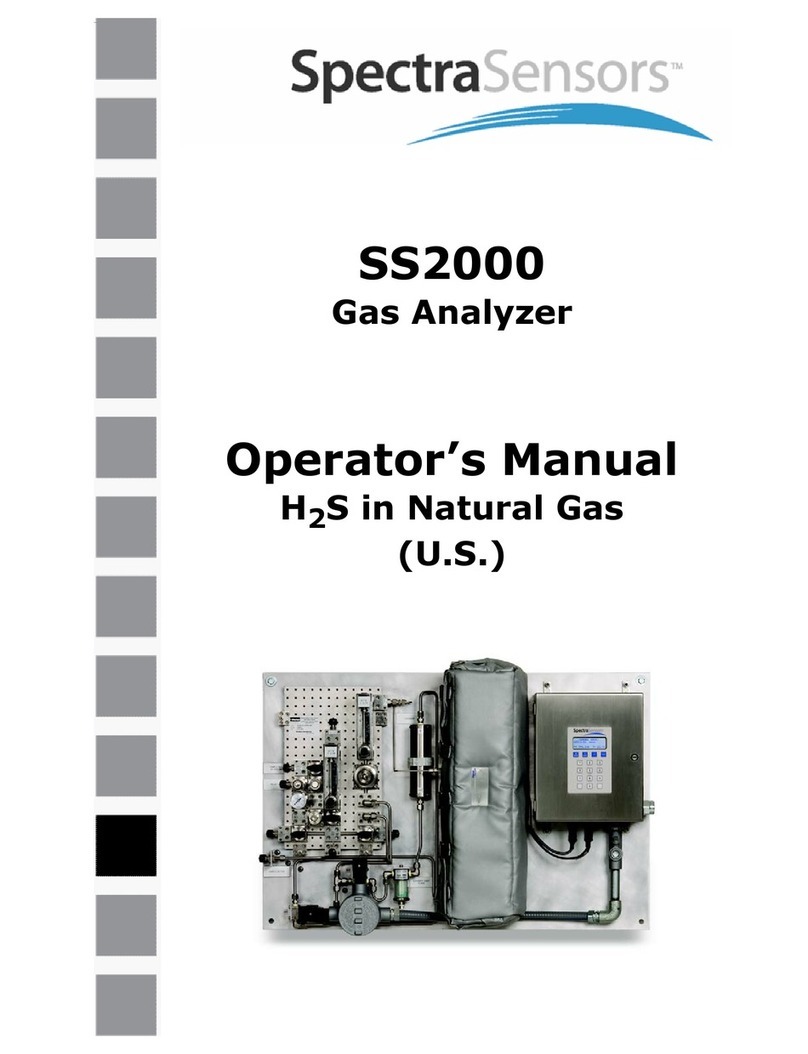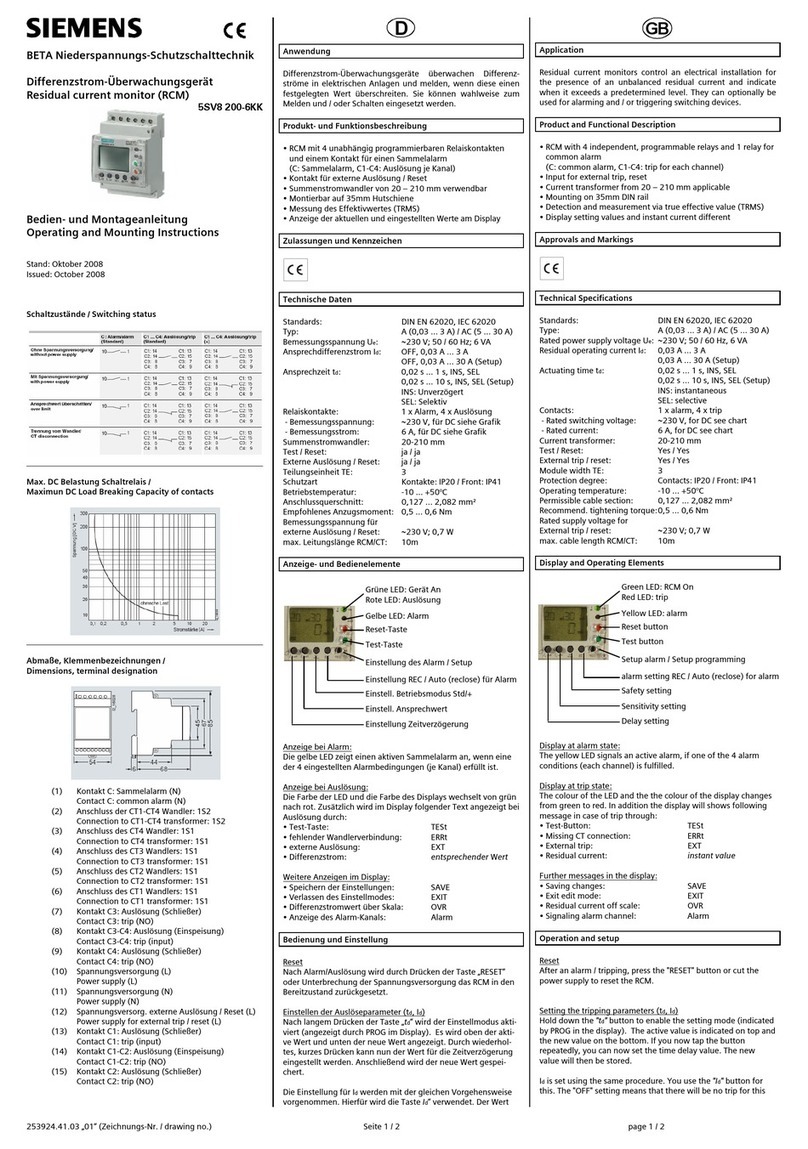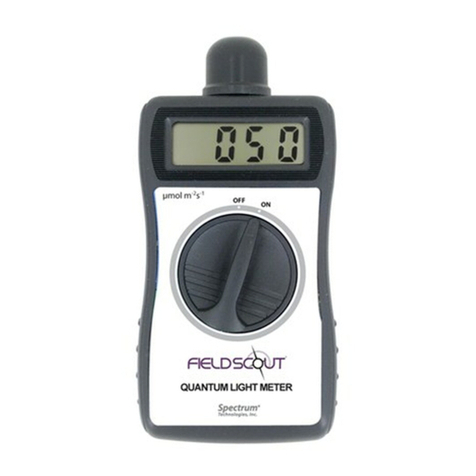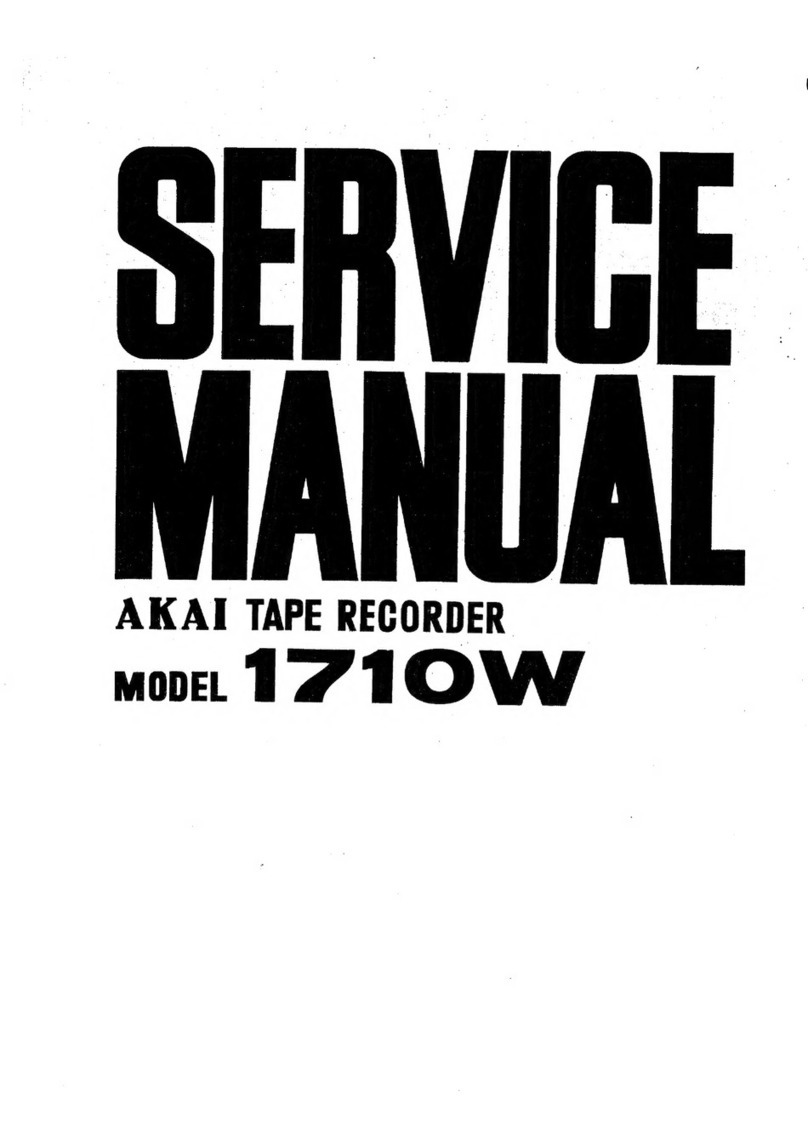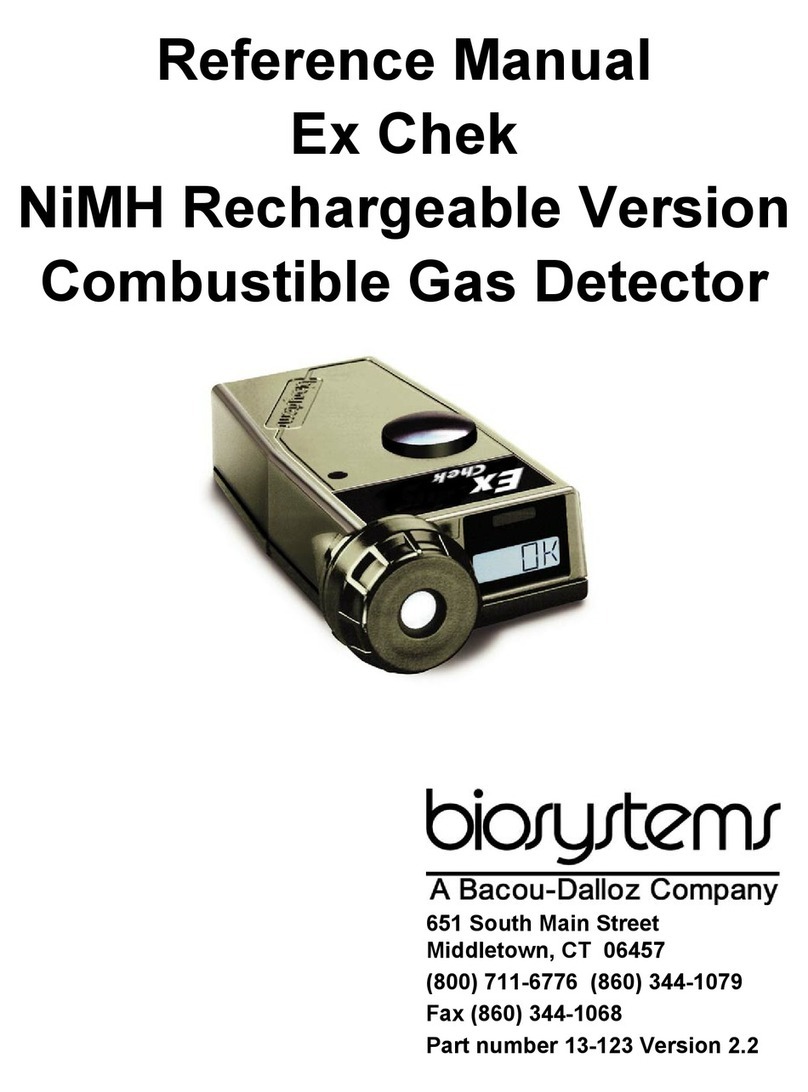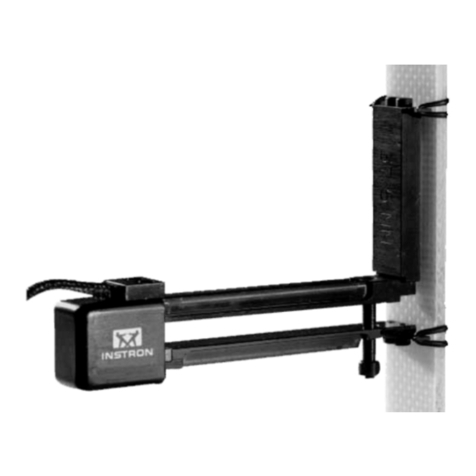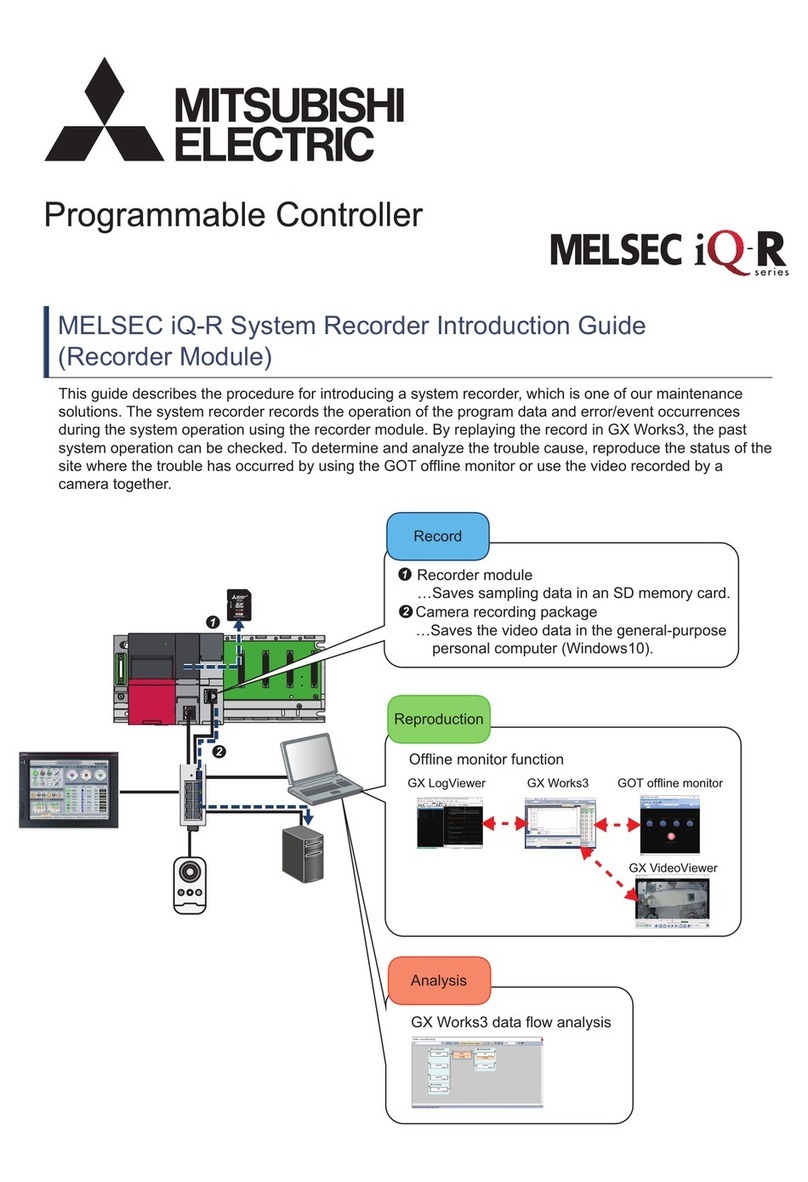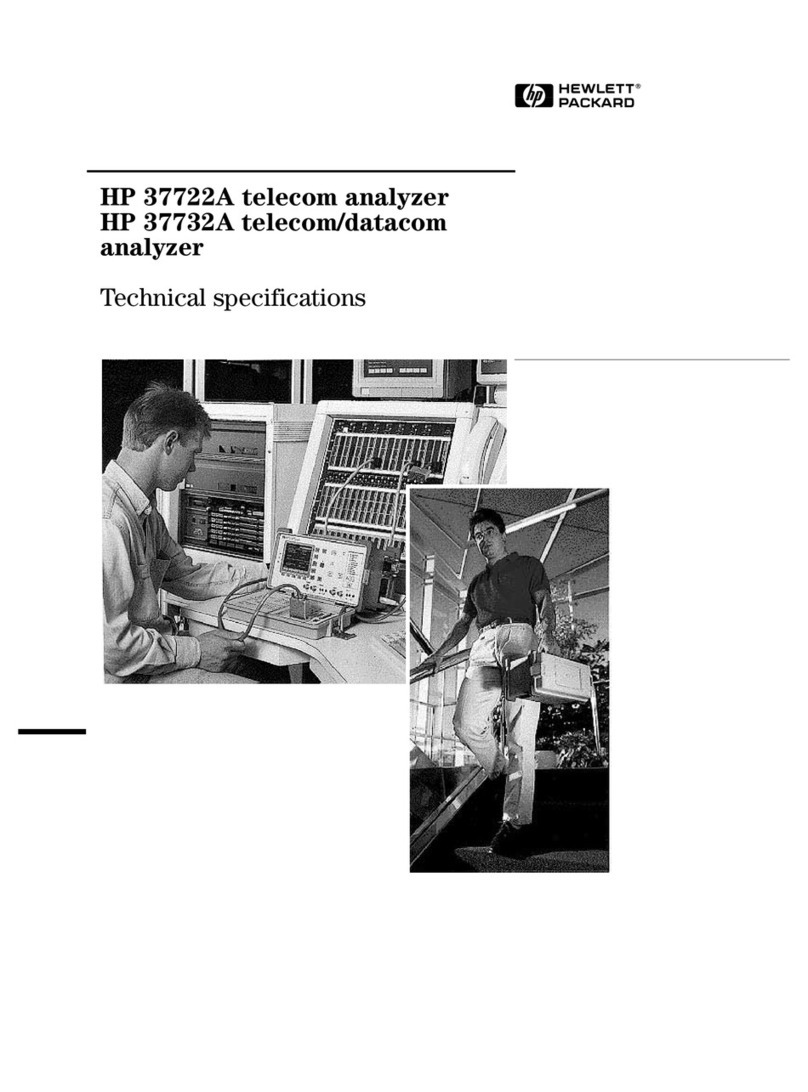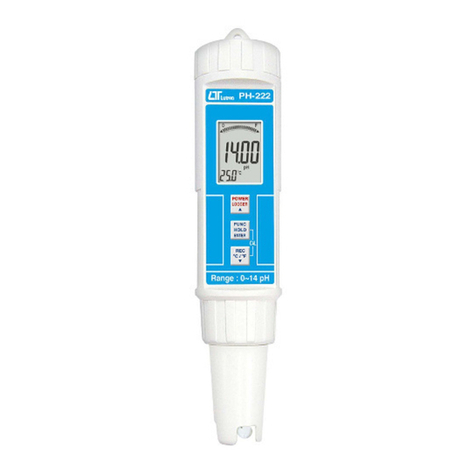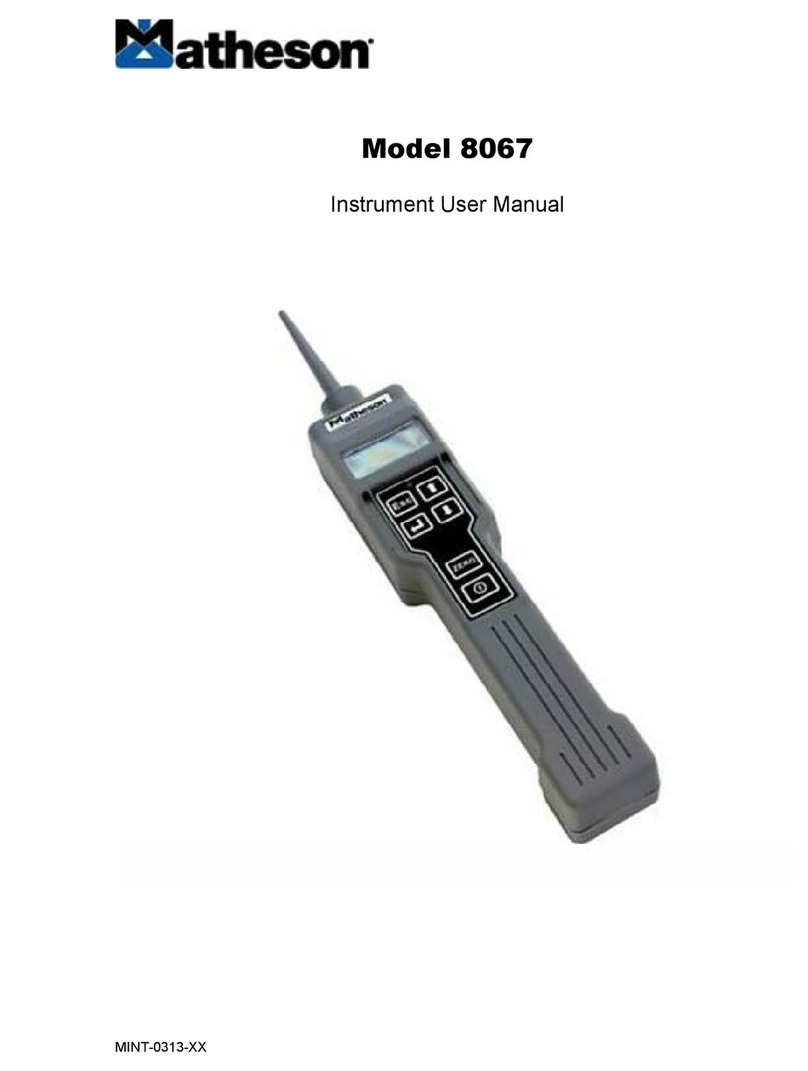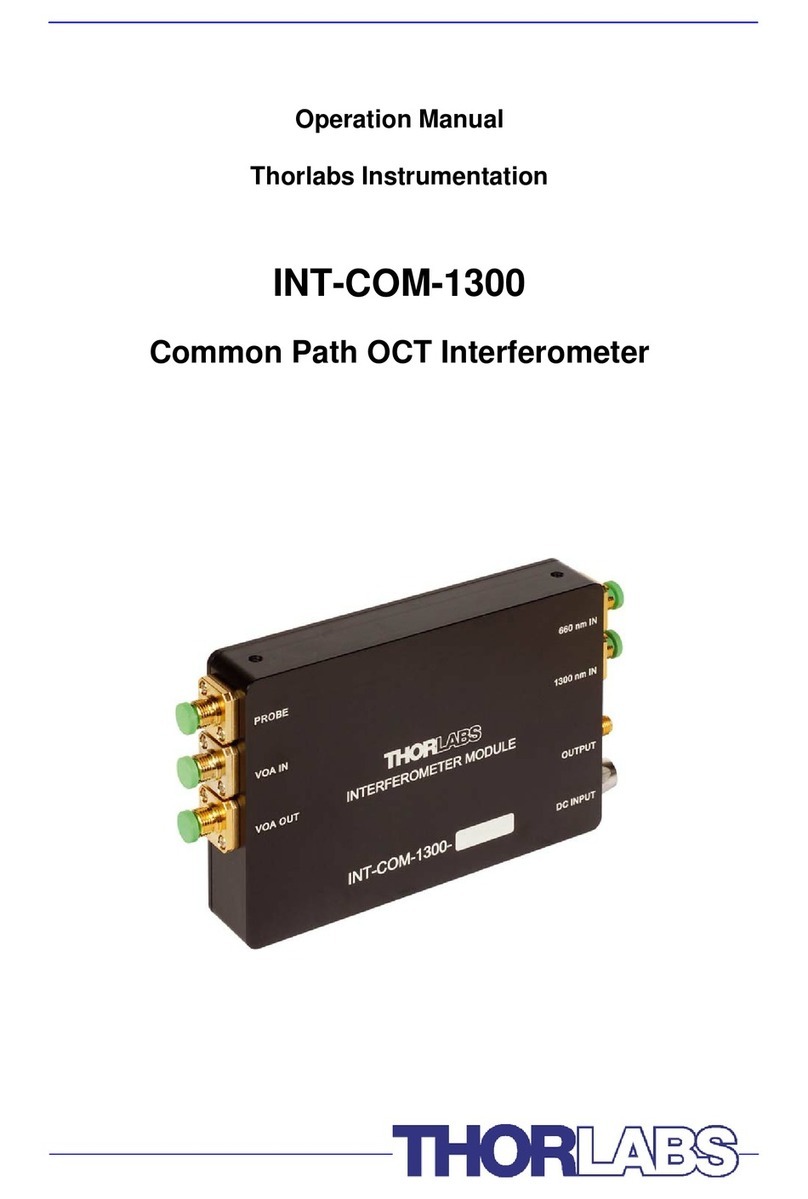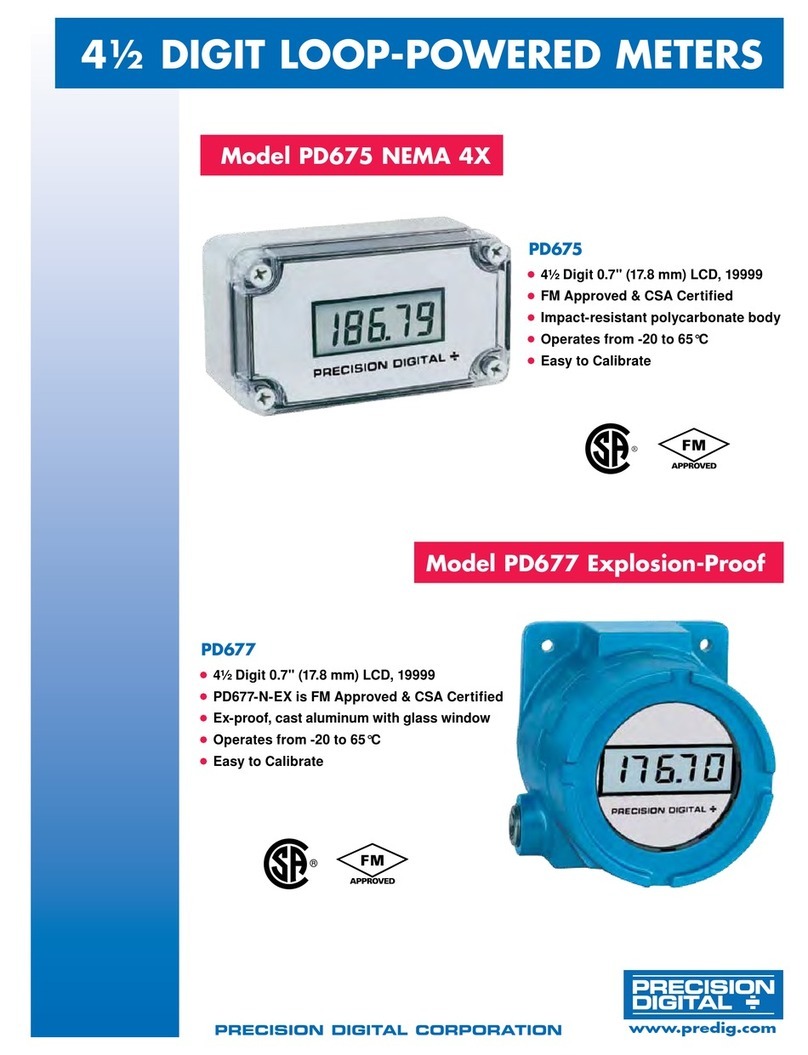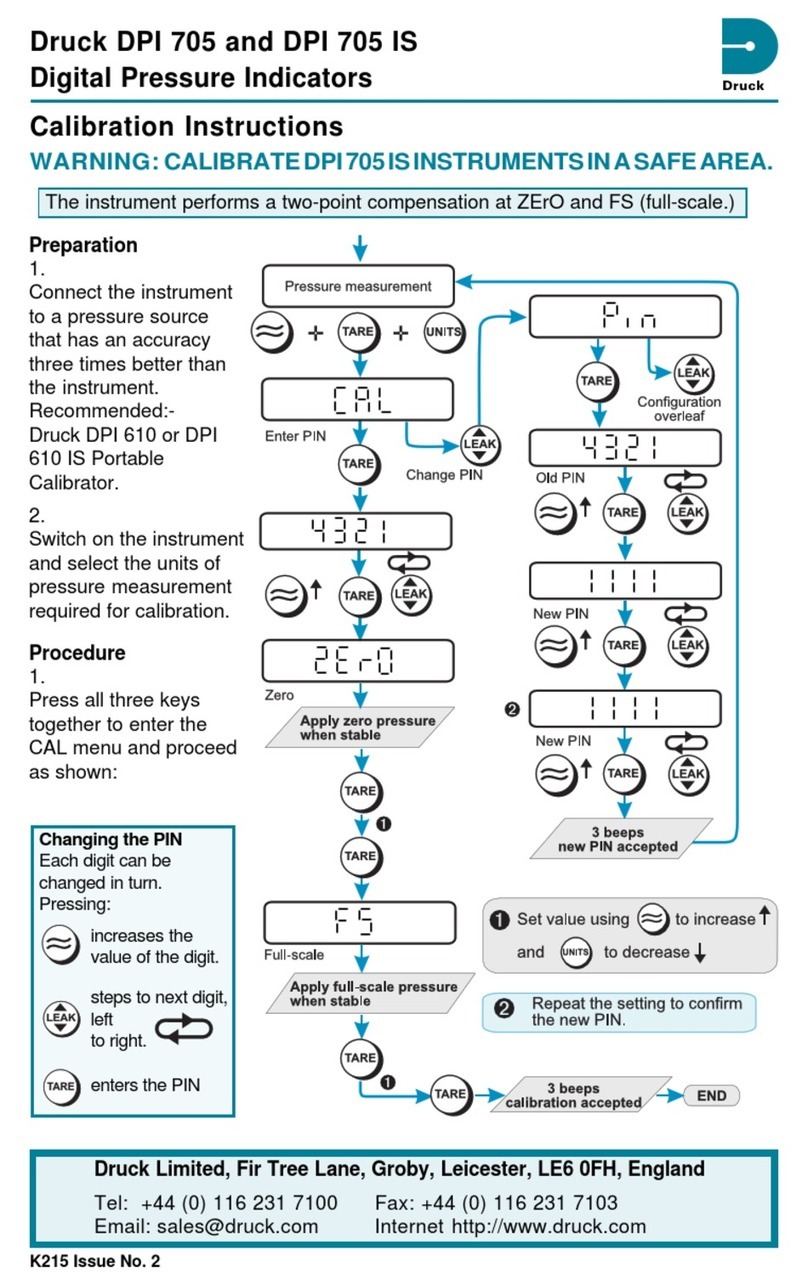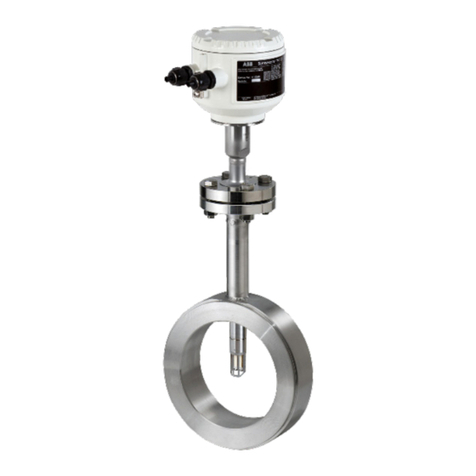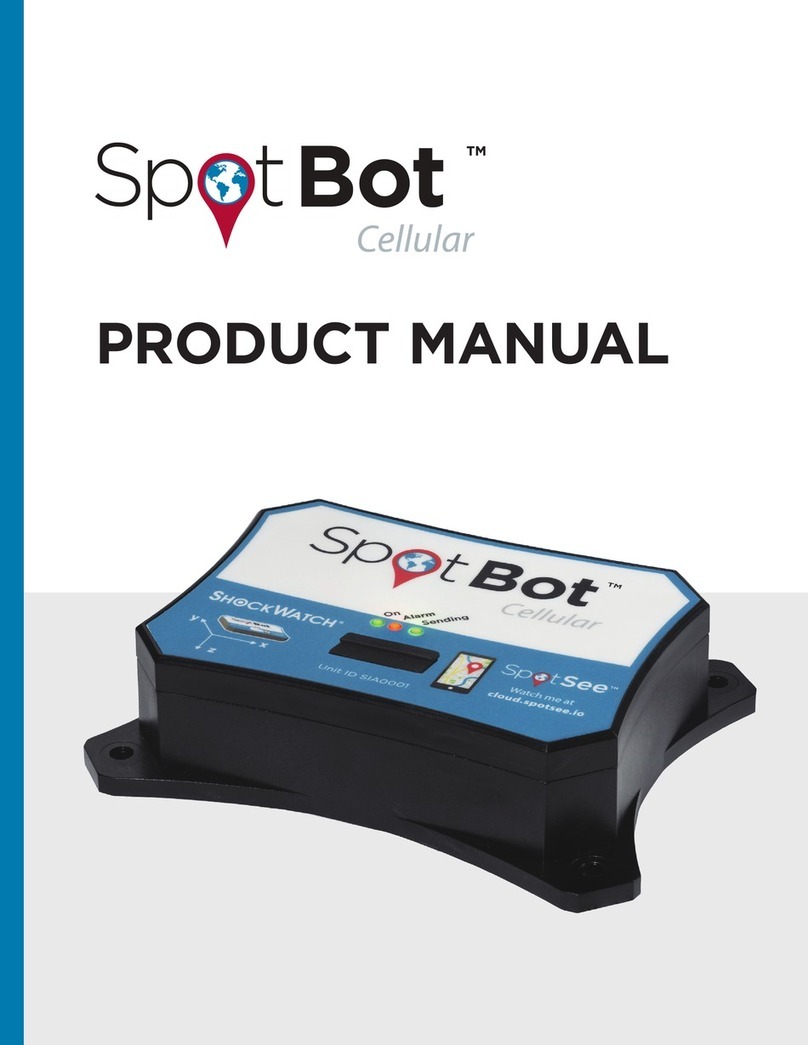Spectrasensors SS2100 Instruction Manual

SS2100 Trace
Moisture Analyzer
Hardware Installation and
Maintenance Manual
P/N 4900002257 rev A


Products of
4333 W Sam Houston Pkwy N, Suite 100
Houston, TX 77043-1223
Tel: 800.619.2861
Fax: 713.856.6623
www.spectrasensors.com
Copyright © 2017 SpectraSensors, Inc. No part of this manual may be reproduced in
whole or in part without the express written permission of SpectraSensors, Inc.
SpectraSensors reserves the right to change product design and specifications at any
time without prior notice.
SS2100
Trace Moisture Analyzer
Hardware Installation and
Maintenance Manual
Use this manual with the
FS Firmware Operator’s Manual

Revision History
Revision Engineering Order Date
A EO17089 June 1, 2017

Hardware Installation and Maintenance Manual i
TABLE OF CONTENTS
List of Figures . . . . . . . . . . . . . . . . . . . . . . . . . . . . . . . . . . . . . . . . . . . . . . .v
List of Tables . . . . . . . . . . . . . . . . . . . . . . . . . . . . . . . . . . . . . . . . . . . . . . . vii
1: Introduction
Who Should Read This Manual . . . . . . . . . . . . . . . . . . . . . . . . . . . . . . . . . . . . 1-1
How to Use This Manual. . . . . . . . . . . . . . . . . . . . . . . . . . . . . . . . . . . . . . . . . 1-1
General Warnings and Cautions . . . . . . . . . . . . . . . . . . . . . . . . . . . . . . . . . 1-1
Equipment Labels . . . . . . . . . . . . . . . . . . . . . . . . . . . . . . . . . . . . . . . . 1-1
Instructional Symbols . . . . . . . . . . . . . . . . . . . . . . . . . . . . . . . . . . . 1-2
Conventions Used in this Manual . . . . . . . . . . . . . . . . . . . . . . . . . . . . . . . . 1-2
SpectraSensors Overview . . . . . . . . . . . . . . . . . . . . . . . . . . . . . . . . . . . . . . . 1-3
About the Gas Analyzers . . . . . . . . . . . . . . . . . . . . . . . . . . . . . . . . . . . . . . . . 1-3
Sample Conditioning System (SCS) . . . . . . . . . . . . . . . . . . . . . . . . . . . . . . 1-3
Determining Firmware Version . . . . . . . . . . . . . . . . . . . . . . . . . . . . . . . . . 1-3
How the Analyzers Work . . . . . . . . . . . . . . . . . . . . . . . . . . . . . . . . . . . . . . . . 1-3
Wavelength Modulation Spectroscopy (WMS) Signal Detection . . . . . . . . . . . 1-6
Getting Familiar with the Analyzer . . . . . . . . . . . . . . . . . . . . . . . . . . . . . . . . . 1-7
2: Installation
What Should be Included in the Shipping Box . . . . . . . . . . . . . . . . . . . . . . . . . 2-1
Inspecting the Analyzer . . . . . . . . . . . . . . . . . . . . . . . . . . . . . . . . . . . . . . . . . 2-1
Installing the Analyzer. . . . . . . . . . . . . . . . . . . . . . . . . . . . . . . . . . . . . . . . . . 2-1
Hardware and Tools for Installation . . . . . . . . . . . . . . . . . . . . . . . . . . . . . . 2-2
Hardware. . . . . . . . . . . . . . . . . . . . . . . . . . . . . . . . . . . . . . . . . . . . . . 2-2
Tools . . . . . . . . . . . . . . . . . . . . . . . . . . . . . . . . . . . . . . . . . . . . . . . . . 2-2
Mounting the Analyzer. . . . . . . . . . . . . . . . . . . . . . . . . . . . . . . . . . . . . . . . . . 2-3
Lifting/carrying the analyzer . . . . . . . . . . . . . . . . . . . . . . . . . . . . . . . . . . . 2-3
To mount the analyzer . . . . . . . . . . . . . . . . . . . . . . . . . . . . . . . . . . . . . . . 2-4
Connecting Electrical Power to the Analyzer . . . . . . . . . . . . . . . . . . . . . . . . . . . 2-5
Protective chassis and ground connections . . . . . . . . . . . . . . . . . . . . . . . . . 2-5
To connect electrical power to the analyzer. . . . . . . . . . . . . . . . . . . . . . . . . 2-6
Field Interface Loads (Solenoid Valves) . . . . . . . . . . . . . . . . . . . . . . . . . . . 2-7
Connecting Electrical Power to the Enclosure Heater . . . . . . . . . . . . . . . . . . . . . 2-8
To connect electrical power to the enclosure heater . . . . . . . . . . . . . . . . . . . 2-8
Application of Conduit Lubricant . . . . . . . . . . . . . . . . . . . . . . . . . . . . . . . . . . 2-10
Connecting the Signals and Alarms . . . . . . . . . . . . . . . . . . . . . . . . . . . . . . . . 2-11
To connect the signal and alarm cables . . . . . . . . . . . . . . . . . . . . . . . . . . 2-12
Changing the 4-20 mA Current Loop Mode. . . . . . . . . . . . . . . . . . . . . . . . . . . 2-14
To change the 4-20 mA board from source to sink . . . . . . . . . . . . . . . . . . . 2-14
Calibrating the analog output . . . . . . . . . . . . . . . . . . . . . . . . . . . . . . . 2-15
Testing and adjusting the 4-20 mA zero and span . . . . . . . . . . . . . . . . 2-15
Connecting the Gas Lines. . . . . . . . . . . . . . . . . . . . . . . . . . . . . . . . . . . . . . . 2-16
Instrument air . . . . . . . . . . . . . . . . . . . . . . . . . . . . . . . . . . . . . . . . . . . . 2-16
To connect the sample supply line . . . . . . . . . . . . . . . . . . . . . . . . . . . . . . 2-16
To connect the sample returns . . . . . . . . . . . . . . . . . . . . . . . . . . . . . . . . 2-17
To connect the bypass return . . . . . . . . . . . . . . . . . . . . . . . . . . . . . . . . . 2-18
Conditioning the SCS Tubing . . . . . . . . . . . . . . . . . . . . . . . . . . . . . . . . . . . . 2-19
3: Sample Conditioning System
About the SCS . . . . . . . . . . . . . . . . . . . . . . . . . . . . . . . . . . . . . . . . . . . . . . . 3-1
Typical SCS Component Overview. . . . . . . . . . . . . . . . . . . . . . . . . . . . . . . . . . 3-1

SS2100 Trace Moisture Analyzer
ii 4900002257 rev. A 6-1-17
Sample Conditioning System Filters . . . . . . . . . . . . . . . . . . . . . . . . . . . . . . 3-2
Sample Transport Tubing . . . . . . . . . . . . . . . . . . . . . . . . . . . . . . . . . . . . . 3-2
Sample Bypass Flow Control . . . . . . . . . . . . . . . . . . . . . . . . . . . . . . . . . . . 3-2
SCS Pressure Regulator . . . . . . . . . . . . . . . . . . . . . . . . . . . . . . . . . . . . . . 3-2
Sample Flow Controller. . . . . . . . . . . . . . . . . . . . . . . . . . . . . . . . . . . . . . . 3-2
Sample Dryer . . . . . . . . . . . . . . . . . . . . . . . . . . . . . . . . . . . . . . . . . . . . . 3-3
Validation Systems. . . . . . . . . . . . . . . . . . . . . . . . . . . . . . . . . . . . . . . . . . 3-3
Sample Return/Vent. . . . . . . . . . . . . . . . . . . . . . . . . . . . . . . . . . . . . . . . . 3-3
SCS Heaters . . . . . . . . . . . . . . . . . . . . . . . . . . . . . . . . . . . . . . . . . . . . . . 3-3
Checking the SCS Installation. . . . . . . . . . . . . . . . . . . . . . . . . . . . . . . . . . . . . 3-4
To perform SCS installation checks . . . . . . . . . . . . . . . . . . . . . . . . . . . . . . 3-4
Starting up the SCS . . . . . . . . . . . . . . . . . . . . . . . . . . . . . . . . . . . . . . . . . . . 3-5
To prepare for SCS startup . . . . . . . . . . . . . . . . . . . . . . . . . . . . . . . . . . . . 3-5
To start up the field pressure reducing station. . . . . . . . . . . . . . . . . . . . . . . 3-6
To start up the sample bypass stream on process sample . . . . . . . . . . . . . . . 3-6
To start up the analyzer on process sample . . . . . . . . . . . . . . . . . . . . . . . . 3-7
To start up the sample system heater . . . . . . . . . . . . . . . . . . . . . . . . . . . . 3-8
Shutting Down the SCS . . . . . . . . . . . . . . . . . . . . . . . . . . . . . . . . . . . . . . . . . 3-8
To isolate the measurement sample cell for short-term shutdown . . . . . . . . . 3-9
To isolate the SCS for short-term shutdown . . . . . . . . . . . . . . . . . . . . . . . 3-10
To isolate the process sample tap for long-term shutdown . . . . . . . . . . . . . 3-10
To purge the analyzer for shipment/relocation. . . . . . . . . . . . . . . . . . . . . . 3-12
Periodic SCS Maintenance . . . . . . . . . . . . . . . . . . . . . . . . . . . . . . . . . . . . . . 3-12
Preventive and Demand SCS Maintenance . . . . . . . . . . . . . . . . . . . . . . . . . . . 3-13
Regular SCS Status Check . . . . . . . . . . . . . . . . . . . . . . . . . . . . . . . . . . . 3-13
To check filters . . . . . . . . . . . . . . . . . . . . . . . . . . . . . . . . . . . . . . . . . . . 3-14
4: Permeation Validation
Validation Method . . . . . . . . . . . . . . . . . . . . . . . . . . . . . . . . . . . . . . . . . . . . . 4-1
Permeation Validation for Trace Moisture
(0-10 ppm H2O) Analyzers. . . . . . . . . . . . . . . . . . . . . . . . . . . . . . . . . . . . . . 4-1
Setting the Kp Value . . . . . . . . . . . . . . . . . . . . . . . . . . . . . . . . . . . . . . . . 4-2
Validation of Trace Moisture Measurements Using Permeation Devices . . . . . . . . 4-2
Replacing the Permeation Device . . . . . . . . . . . . . . . . . . . . . . . . . . . . . . . . . . 4-5
To replace the permeation device . . . . . . . . . . . . . . . . . . . . . . . . . . . . . . . 4-5
Appendix A: Specifications
Spare Parts . . . . . . . . . . . . . . . . . . . . . . . . . . . . . . . . . . . . . . . . . . . . . . . . A-13
Appendix B: Maintenance and Troubleshooting
Gas Leaks . . . . . . . . . . . . . . . . . . . . . . . . . . . . . . . . . . . . . . . . . . . . . . . . . . B-1
Contamination . . . . . . . . . . . . . . . . . . . . . . . . . . . . . . . . . . . . . . . . . . . . . . . B-1
To keep the sampling lines clean . . . . . . . . . . . . . . . . . . . . . . . . . . . . . . . . B-2
Excessive Sampling Gas Temperatures and Pressures . . . . . . . . . . . . . . . . . . . . B-2
Electrical Noise . . . . . . . . . . . . . . . . . . . . . . . . . . . . . . . . . . . . . . . . . . . . . . . B-3
Potential Risks Affecting Personnel . . . . . . . . . . . . . . . . . . . . . . . . . . . . . . . . . B-3
Mitigating risks . . . . . . . . . . . . . . . . . . . . . . . . . . . . . . . . . . . . . . . . . . . . B-3
Electrocution hazard . . . . . . . . . . . . . . . . . . . . . . . . . . . . . . . . . . . . . . B-3
Explosion hazard. . . . . . . . . . . . . . . . . . . . . . . . . . . . . . . . . . . . . . . . . B-3
Cleaning the Mirrors . . . . . . . . . . . . . . . . . . . . . . . . . . . . . . . . . . . . . . . . . . . B-4
Tools and materials . . . . . . . . . . . . . . . . . . . . . . . . . . . . . . . . . . . . . . . . . B-4
To clean the mirrors . . . . . . . . . . . . . . . . . . . . . . . . . . . . . . . . . . . . . . . . . B-5
Replacing the Filter . . . . . . . . . . . . . . . . . . . . . . . . . . . . . . . . . . . . . . . . . . . . B-6
Replacing the Dryer. . . . . . . . . . . . . . . . . . . . . . . . . . . . . . . . . . . . . . . . . . . . B-7
Replacing a Fuse. . . . . . . . . . . . . . . . . . . . . . . . . . . . . . . . . . . . . . . . . . . . . . B-7
Replacing the Pressure Transducer on a 8-m cell . . . . . . . . . . . . . . . . . . . . . . . B-9
Tools and materials . . . . . . . . . . . . . . . . . . . . . . . . . . . . . . . . . . . . . . . . . B-9

Table of Contents
Hardware Installation and Maintenance Manual iii
To replace the pressure transducer on a 8-m cell. . . . . . . . . . . . . . . . . . . . . B-9
Peak Tracking Reset Procedure . . . . . . . . . . . . . . . . . . . . . . . . . . . . . . . . . . . B-15
Instrument Problems. . . . . . . . . . . . . . . . . . . . . . . . . . . . . . . . . . . . . . . . . . B-15
Service Contact . . . . . . . . . . . . . . . . . . . . . . . . . . . . . . . . . . . . . . . . . . . . . B-20
Customer Service. . . . . . . . . . . . . . . . . . . . . . . . . . . . . . . . . . . . . . . . . B-20
Service Repair Order . . . . . . . . . . . . . . . . . . . . . . . . . . . . . . . . . . . . . . . B-20
Before contacting Technical Service . . . . . . . . . . . . . . . . . . . . . . . . . . . . . B-20
Packing . . . . . . . . . . . . . . . . . . . . . . . . . . . . . . . . . . . . . . . . . . . . . . . . . . . B-21
To prepare the analyzer for shipment or storage . . . . . . . . . . . . . . . . . . . . B-21
Storage . . . . . . . . . . . . . . . . . . . . . . . . . . . . . . . . . . . . . . . . . . . . . . . . . . . B-22
Disclaimers . . . . . . . . . . . . . . . . . . . . . . . . . . . . . . . . . . . . . . . . . . . . . . . . B-22
Warranty . . . . . . . . . . . . . . . . . . . . . . . . . . . . . . . . . . . . . . . . . . . . . . . . . . B-22
Index . . . . . . . . . . . . . . . . . . . . . . . . . . . . . . . . . . . . . . . . . . . . . . . . . Index-1

SS2100 Trace Moisture Analyzer
iv 4900002257 rev. A 6-1-17
THIS PAGE INTENTIONALLY LEFT BLANK

Hardware Installation and Maintenance Manual v
LIST OF FIGURES
Figure 1–1. Schematic of a typical laser diode absorption spectrometer . . . . . . 1-4
Figure 1–2. Typical raw signal from a laser diode absorption spectrometer
with and without mirror contamination . . . . . . . . . . . . . . . . . . . . 1-5
Figure 1–3. Typical normalized absorption signal from a laser diode
absorption spectrometer . . . . . . . . . . . . . . . . . . . . . . . . . . . . . . 1-6
Figure 1–4. Typical normalized 2f signal; species concentration is
proportional to the peak height . . . . . . . . . . . . . . . . . . . . . . . . . 1-7
Figure 1–5. SS2100 analyzer architecture. . . . . . . . . . . . . . . . . . . . . . . . . . . 1-8
Figure 1–6. SS2100 electronics control board (AC) showing signal
terminal block and alarm relays . . . . . . . . . . . . . . . . . . . . . . . . . 1-9
Figure 1–7. SS2100 electronics control board (DC) showing signal
terminal block and alarm relays . . . . . . . . . . . . . . . . . . . . . . . . 1-10
Figure 2–1. Lifting points for the SS2100 Trace Moisture analyzer . . . . . . . . . . 2-4
Figure 2–2. AC single phase (120 VAC/240 VAC) connection terminal
block in analyzer electronics enclosure . . . . . . . . . . . . . . . . . . . . 2-7
Figure 2–3. DC connection (24VDC) terminal block in analyzer
electronics enclosure. . . . . . . . . . . . . . . . . . . . . . . . . . . . . . . . . 2-8
Figure 2–4. AC connection terminal block for enclosure heater . . . . . . . . . . . . 2-9
Figure 2–5. Applying conduit lubricant . . . . . . . . . . . . . . . . . . . . . . . . . . . . 2-10
Figure 2–6. Mating terminal block (TB2) in electronics enclosure for
connecting signal cables . . . . . . . . . . . . . . . . . . . . . . . . . . . . . 2-12
Figure 2–7. Analyzer 4-20 mA board . . . . . . . . . . . . . . . . . . . . . . . . . . . . . 2-14
Figure 3–1. Cell supply and cell return shut-off valves . . . . . . . . . . . . . . . . . . 3-7
Figure 4–1. Schematic of permeation tube . . . . . . . . . . . . . . . . . . . . . . . . . . 4-3
Figure 4–2. Typical sample system for differential measurement with
permeation tube validation capability . . . . . . . . . . . . . . . . . . . . . 4-4
Figure A–1. Outline schematic (front view) of SS2100 for trace moisture
analyzer (solenoids to side of electronics) . . . . . . . . . . . . . . . . . . A-3
Figure A–2. Flow schematic of SS2100 for trace moisture analyzer
(solenoids to side of electronics). . . . . . . . . . . . . . . . . . . . . . . . . A-4
Figure A–3. Flow schematic of SS2100 for trace moisture analyzer
(solenoids to side of electronics) (Continued) . . . . . . . . . . . . . . . . A-5
Figure A–4. Wiring Diagram of SS2100 for trace moisture analyzer
(solenoids to side of electronics). . . . . . . . . . . . . . . . . . . . . . . . . A-6
Figure A–5. Electrical schematic of SS2100 for trace moisture analyzer
(solenoids to side of electronics). . . . . . . . . . . . . . . . . . . . . . . . . A-7
Figure A–6. Remote mount configuration: Outline schematic (front view) of
SS2100 for trace moisture analyzer (solenoids below electronics). . A-8
Figure A–7. Remote mount configuration: Flow schematic of SS2100 for
trace moisture analyzer (solenoids below electronics) . . . . . . . . . . A-9

SS2100 Trace Moisture Analyzer
vi 4900002257 rev. A 6-1-17
Figure A–8. Remote mount configuration: Flow schematic of SS2100
for trace moisture analyzer (solenoids below electronics)
(Continued) . . . . . . . . . . . . . . . . . . . . . . . . . . . . . . . . . . . . . . A-10
Figure A–9. Remote mount configuration: Wiring schematic of SS2100
for trace moisture analyzer (solenoids below electronics). . . . . . . A-11
Figure A–10. Remote mount configuration: Electrical schematic of SS2100
for trace moisture analyzer (solenoids below electronics). . . . . . . A-12
Figure B–1. Unscrewing fuse cover. . . . . . . . . . . . . . . . . . . . . . . . . . . . . . . . B-8
Figure B–2. Replacing fuse . . . . . . . . . . . . . . . . . . . . . . . . . . . . . . . . . . . . . B-8
Figure B–3. SCS cabinet interior . . . . . . . . . . . . . . . . . . . . . . . . . . . . . . . . B-10
Figure B–4. Removed measurement cell with pressure transducer face up . . . B-11
Figure B–5. Removing the old pressure transducer. . . . . . . . . . . . . . . . . . . . B-11
Figure B–6. Removing excess seal tape from flange . . . . . . . . . . . . . . . . . . . B-12
Figure B–7. Removing excess seal tape from inside cell . . . . . . . . . . . . . . . . B-12
Figure B–8. Replacing seal tape . . . . . . . . . . . . . . . . . . . . . . . . . . . . . . . . . B-13
Figure B–9. Replacing pressure transducer . . . . . . . . . . . . . . . . . . . . . . . . . B-13
Figure B–10. New pressure transducer installed . . . . . . . . . . . . . . . . . . . . . . B-14

Hardware Installation and Maintenance Manual vii
LIST OF TABLES
Table 1–1. Fuse specifications . . . . . . . . . . . . . . . . . . . . . . . . . . . . . . . . . 1-11
Table 2–1. Input/output signal connections . . . . . . . . . . . . . . . . . . . . . . . . 2-13
Table A–1. SS2100 trace moisture analyzer specifications . . . . . . . . . . . . . . . A-1
Table A–2. Replacement parts for trace moisture analyzer . . . . . . . . . . . . . . A-13
Table B–1. Potential instrument problems and their solutions. . . . . . . . . . . . B-15

SS2100 Trace Moisture Analyzer
viii 4900002257 rev. A 6-1-17
THIS PAGE INTENTIONALLY LEFT BLANK

Hardware Installation and Maintenance Manual 1–1
1 - INTRODUCTION
SpectraSensors’ SS2100 Trace Moisture analyzer is a high-speed, diode-laser
based extractive analyzer designed for extremely reliable monitoring of very
low (trace) concentrations of moisture in natural gas. In order to ensure that
the analyzer performs as specified, it is important to closely review the
installation and operation sections of this manual. This manual contains a
comprehensive overview of the SS2100 Trace Moisture analyzer through step-
by-step instructions for installing and maintaining the system hardware.
For instruction on operating the analyzer through firmware programming,
please consult the Firmware Operator’s Manual.
Who Should Read This Manual
This manual should be read and referenced by anyone installing, operating or
having direct contact with the analyzer.
How to Use This Manual
Take a moment to familiarize yourself with the contents of this manual by
reading the Table of Contents.
There are a number of options and accessories available for the SS2100
analyzers. This manual has been written to address the most common options
and accessories. Images, tables and charts have been included to provide a
visual understanding of the analyzer and its functions. Special symbols are also
used to provide the user with key information regarding the system
configuration and/or operation. Pay close attention to this information.
General Warnings and Cautions
Instructional icons are provided in this manual and on the SS2100 unit to alert
the user of potential hazards, important information and valuable tips.
Following are the symbols and associated warning and caution types to observe
when servicing the analyzer. Some of these symbols are provided for
instructional purposes only and are not labeled on the system.
Equipment Labels
Warning statement for hazardous voltage. Contact may cause
electric shock or burn. Turn off and lock out system before
servicing.
INVISIBLE LASER RADIATION - Avoid exposure to beam.
Class 3b Radiation Product. Refer servicing to the manufacturer-
qualified personnel.

SS2100 Trace Moisture Analyzer
1–2 4900002257 rev. A 6-1-17
Instructional Symbols
Conventions Used in this Manual
In addition to the symbols and instructional information, this manual is created
with “hot links” to enable the user to quickly navigate between different
sections within the manual. These links are identified by a pointing finger
cursor when rolling over the text. Simply click on the link to navigate to
the associated reference.
Failure to follow all directions may result in damage or
malfunction of the analyzer.
INVISIBLE LASER RADIATION - Avoid
exposure to beam. Class 3b Radiation Product.
Refer servicing to the manufacturer-qualified
personnel.
General notes and important information concerning the
installation and operation of the analyzer.
Failure to follow all directions may result in damage or
malfunction of the analyzer.
Failure to follow all directions or substitution of components may
result in explosion.
Failure to follow all directions may result in fire.
Maximum voltage and current specifications for fuses.
LASER RADIATION
AVOID EXPOSURE TO BEAM
CLASS 3B LASER PRODUCT

Introduction
Hardware Installation and Maintenance Manual 1–3
SpectraSensors Overview
SpectraSensors, Inc. is a leading manufacturer of technologically advanced
electro-optic gas analyzers for the industrial process, gas distribution and
environmental monitoring markets. Headquartered in Houston, Texas, Spec-
traSensors was incorporated in 1999 as a spin-off of the NASA/Caltech Jet
Propulsion Laboratory (JPL) for the purpose of commercializing space-proven
measurement technologies initially developed at JPL. SpectraSensors was
acquired by the Endress + Hauser Group in 2012, which has expanded our
reach in the global marketplace.
About the Gas Analyzers
The SS2100 analyzers are tunable diode laser (TDL) absorption spectrometers
operating in the near- to short-wavelength infrared. Each compact sensor
consists of a TDL light source, sample cell and detector specifically configured
to enable high sensitivity measurement of a particular component within the
presences of other gas phase constituents in the stream. The sensor is
controlled by microprocessor-based electronics with embedded software that
incorporates advanced operational and data processing algorithms.
Sample Conditioning System (SCS)
A sample conditioning system (SCS) is included with the analyzer. The SCS has
been specifically designed to deliver an optimum sample stream that is
representative of the process systems stream at the time of sampling. Most
SS2100 analyzers are configured for use at extractive natural gas sampling
stations.
Determining Firmware Version
When the analyzer is powered on for the first time, the firmware version will
display on the system LCD for approximately seven seconds. Refer to
“Powering Up the Analyzer” in the Firmware Manual for this analyzer for
operational instructions. The firmware version for each analyzer is also listed
on the analyzer calibration certificate.
How the Analyzers Work
The SS2100 analyzers employ tunable diode laser absorption spectroscopy
(TDLAS) to detect the presence of trace substances in process gases.
Absorption spectroscopy is a widely used technique for sensitive trace species
detection. Because the measurement is made in the volume of the gas, the
response is much faster, more accurate and significantly more reliable than
traditional surface-based sensors that are subject to surface contamination.
In its simplest form, a diode laser absorption spectrometer typically consists of
a sample cell with a mirror at one end, and a mirror or window at the opposite
end, through which the laser beam can pass. Figure 1–1 shows an 8-m cell

SS2100 Trace Moisture Analyzer
1–4 4900002257 rev. A 6-1-17
cross-section with indicators for standard components and access. The laser
beam enters the cell and reflects off the mirror(s) making one or more passes
through the sample gas and eventually exiting the cell where the remaining
beam intensity is measured by a detector. With the SS2100 analyzers, sample
gas flows continuously through the sample cell ensuring that the sample is
always representative of the flow in the main pipe.
Due to their inherent structure, the molecules in the sample gas each have
characteristic natural frequencies (or resonances). When the output of the
laser is tuned to one of those natural frequencies, the molecules with that
particular resonance will absorb energy from the incident beam. That is, as the
beam of incident intensity, I0(),passes through the sample, attenuation occurs
via absorption by the trace gas with absorption cross section (). According
to the Beer-Lambert absorption law, the intensity remaining, I(), as measured
by the detector at the end of the beam path of length / (cell length x number
of passes), is given by
, (1)
where Nrepresents the species concentration. Thus, the ratio of the absorption
measured when the laser is tuned on-resonance versus off-resonance is
OPTICAL HEAD
DETECTOR
NEAR MIRROR
AND WINDOW
OUTLET
TEC
LASER
TEMPERATURE
SENSOR
8-m Measurement Cell
FAR MIRROR
INLET
PRESSURE
SENSOR
Figure 1–1 Schematic of a typical laser diode
absorption spectrometer
I
I0exp lN–=

Introduction
Hardware Installation and Maintenance Manual 1–5
directly proportional to the number of molecules of that particular species in
the beam path, or
. (2)
Figure 1–2 shows the typical raw data from a laser absorption spectrometer
scan including the incident laser intensity, I0(),and the transmitted intensity,
I(), for a clean system and one with contaminated mirrors (shown to illustrate
the system’s relative intensity to mirror contamination). The positive slope of
raw data results from ramping the current to tune the laser, which not only
increases the wavelength with current, but also causes the corresponding
output power to increase. By normalizing the signal by the incident intensity,
any laser output fluctuations are canceled, and a typical, yet more pronounced,
absorption profile results. Refer to Figure 1–3.
N
1–
l
--------------I
I0
--------------
ln=
Figure 1–2 Typical raw signal from a laser diode
absorption spectrometer with and without mirror
contamination
3.0
2.5
2.0
1.5
1.0
0.5
Incident Energy I0(l)
Raw Signal, I (l)
Raw Signal, I (l)
(Contaminated Mirrors)
Wavelength [a.u.]
Signal [a.u.]
0.0

SS2100 Trace Moisture Analyzer
1–6 4900002257 rev. A 6-1-17
Note that contamination of the mirrors results solely in lower overall signal.
However, by tuning the laser off-resonance as well as on-resonance and
normalizing the data, the technique self calibrates every scan resulting in
measurements that are unaffected by mirror contamination.
Wavelength Modulation Spectroscopy (WMS) Signal Detection
SpectraSensors takes the fundamental absorption spectroscopy concept a step
further by using a sophisticated signal detection technique called wavelength
modulation spectroscopy (WMS). When employing WMS, the laser drive
current is modulated with a kHz sine wave as the laser is rapidly tuned. A lock-
in amplifier is then used to detect the harmonic component of the signal that
is at twice the modulation frequency (2f), as shown in Figure 1–4. This phase-
sensitive detection enables the filtering of low-frequency noise caused by
Figure 1–3 Typical normalized absorption signal
from a laser diode absorption spectrometer
1.0
0.99
0.98
0.97
0.96
0.95
Normalized Absorption Signal
Wavelength [a.u.]
Wavelength [a.u.]

Introduction
Hardware Installation and Maintenance Manual 1–7
turbulence in the sample gas, temperature and/or pressure fluctuations, low-
frequency noise in the laser beam or thermal noise in the detector.
With the resulting low-noise signal and use of fast post-processing algorithms,
reliable parts per million (ppm) or parts per billion (ppb) detection levels are
possible (depending on target and background species) at real-time response
rates (on the order of 1 second).
Measuring different trace gases in various mixed hydrocarbon background
streams is accomplished by selecting a different optimum diode laser
wavelength between 700-3000nm, which provides the least amount of
sensitivity to background stream variations.
Getting Familiar with the Analyzer
Figure 1–5 shows a sample SS2100 analyzer from a front view. The analyzer
is typically comprised of two main enclosures; the analyzer electronics and the
Sample Conditioning System (SCS). On the front panel of the analyzer
electronics, the keypad and LCD display serve as the user interface to the
analyzer. Some systems may also have an optional keypad cover. The analyzer
control electronics drive the laser, collect the signal, analyze the spectra and
provide measurement output signals. This manual provides the components
overview and installation requirements for connecting the SS2100 electronics.
Housed inside the SCS are the measurement cell and heater along with flow
devices to control flow and pressure for the measurement cell and the bypass
loop. Refer to “Sample Conditioning System” on page 3-1.
Figure 1–4 Typical normalized 2f signal;
species concentration is proportional to the
peak height
Normalized
2fSignal
Wavelength [a.u.]
Signal [a.u.]

SS2100 Trace Moisture Analyzer
1–8 4900002257 rev. A 6-1-17
Power is connected to the analyzer from a 120 VAC, 240 VAC power source or
optionally a 24 VDC power source. Sample supply/return air are connected on
the opposite side of the enclosure.
Inside the analyzer electronics enclosure is the electronics assembly, as shown
in Figure 1–6 and Figure 1–7.
Figure 1–5 SS2100
analyzer architecture
KEYPAD, LCD
AND OPTIONAL
KEYPAD COVER
ANALYZER
ELECTRONICS
ENCLOSURE
SAMPLE
CONDITIONING
SYSTEM (SCS)
ENCLOSURE POWER
CONNECTIONS
SAMPLE
SUPPLY
SOLENOID
VALVES
SAMPLE RETURN
(TO ATMOSPHERE)
CHASSIS
GROUND
Other manuals for SS2100
1
Table of contents
Other Spectrasensors Measuring Instrument manuals
